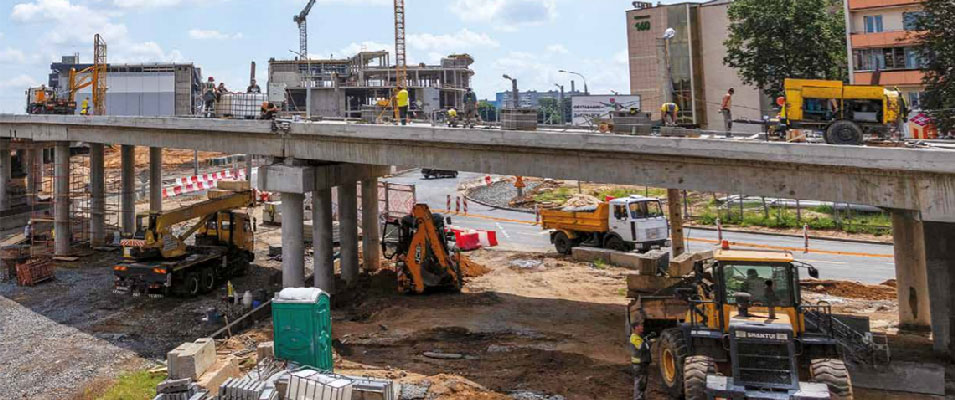

By Ian Hawkesworth
Corruption exists in all sectors and its impacts are universally negative, but corruption in public infrastructure is particularly nefarious for low-income countries. Infrastructure accounts for a higher share of GDP and institutional structures may be less stable. Estimates of losses to bribery in construction, which lies downstream from procurement, are as high as 45 percent of construction costs.
With the COVID-19 pandemic putting immense health, social and economic strain to an already fragile global economy, mitigating corruption in infrastructure is now more critical than ever.
As much as $3-4 trillion annually will be needed globally through 2030 to meet the infrastructure needs of the 1.2 billion people who lack electricity; the 663 million who lack adequate drinking water sources; the 1 billion who live more than two kilometers from an all-weather road; and the many millions who are unable to access work and educational opportunities due to the absence or high cost of transportation services.
The perception of corruption also has reputational risks for governments, undermining public trust and disincentivizing public-private cooperation from quality contractors.
Every phase in an infrastructure project involves distinct combinations of institutions and stakeholders, each with their own vulnerabilities to particular types of misconduct. In some situations, these practices may not even be considered particularly harmful or wrong by the participants – as illustrated by the oft used term for corruption: the price of doing business. This doesn’t happen in a vacuum; corruption is enabled by the conventions and approaches that have been allowed to develop over time.
In the global report, Enhancing Government Effectiveness and Transparency: The Fight Against Corruption, we argue that if the political level commits to systematically implementing integrity measures across the infrastructure cycle, it will have an impact at both a systemic and a project evel.
For integrity to overcome the forces of corruption, a broad and vigorous alliance is needed, using varied tools to foster transparency and openness. Mobilizing citizens and stakeholders and strengthening their voices through greater project transparency and openness can build momentum, and change the political economy and cultural considerations that have allowed corrupt practices to happen.
Through such a sustained and broad-based movement, country examples demonstrate that change can happen. We present three case study examples of strategies to mitigate corruption risks in the acquisition of public infrastructure.
First, the Infrastructure Transparency Initiative (CoST) offers a multi-stakeholder approach to strengthening governance in the infrastructure sector through improved transparency, stakeholder engagement and accountability. Three country examples are presented:
- Thailand shows the evolution of a multi-stakeholder working group.
- The Ukraine case examines the institutional foundations for actionable data disclosure.
- In Honduras, international support has been combined with local leadership to strengthen transparency and accountability in infrastructure.
Each case represents an evolving story, with no doubt significant hurdles and gaps in implementation yet to be overcome.
Second, Public-private partnership (PPP) renegotiation of infrastructure projects has the potential for abuse, as evidenced in Brazil, which was the epicenter of one of the largest corruption scandals in history. PPPs are renegotiated much more often than similar private contracts. Dishonest contractors make lowball bids to win contracts, knowing that they can later reap windfalls during a less transparent contract renegotiation process.
PPP renegotiations can also allow governments to elude spending controls and defer costs to future administrations, while companies can use renegotiations and bribery to build market share. While changes to a long-term PPP contract may be inevitable, this case study offers guidance to reduce the probability of opportunistic renegotiations that are motivated by corruption.
The third case examines how the Colombia Society of Engineers (SCI) began supporting Open Contracting, when they suspected that tender specifications were so narrow that they were being tailored to benefit particular bidders. The case highlights how the government acted upon the SCI findings by making standard documents mandatory for all state governments in 2019, and by updating the country’s e-procurement platform to publish data in the open, standardized, and reusable Open Contracting Data Standard (OCDS format. Utilizing data analytics to assess these reforms, the government is already seeing increases in competition and better value-for-money for the public.
Even under the most complicated and difficult contexts, incremental progress in ending corruption is possible. Only when countries take accountability and transparency initiatives and mechanisms seriously with buy-in at all levels can they build a strong foundation for a better tomorrow.
- Ian Hawkesworth is a global Public-Private Partnerships expert who recently joined the World Bank Group’s Governance Global Practice.
This blog is part of a series based on a new global report, “Enhancing Government Effectiveness and Transparency: The Fight Against Corruption.”
© World Bank Blogs, worldbank.org 2020



